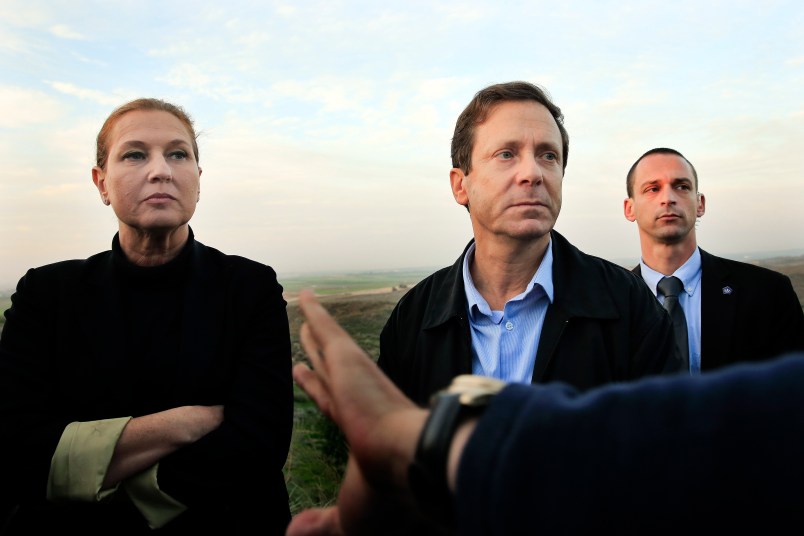Since I talked to you last about the upcoming Israeli elections in March there’s been some wobbling in the polls that I wanted to let you know about. As noted earlier, both Likud and Labor have been hovering in the low-20s for the number of Knesset seats they are expected to gain in the election, with Labor holding a very small but seemingly persistent lead. That changed in early January when the numbers flipped. New polls showed Likud holding a comparably thin lead.
Some speculated that the shift was due to the publicity surrounding the Likud primaries (held to determine the rank candidates get on the party’s list and thus likelihood of getting into the Knesset). That speculation now seems to be confirmed as two new polls show Labor (now going under the banner of the ‘Zionist camp’ in its alliance with Tzipi Livni) going back into a comparable lead after completing its own primaries. The two polls show Labor with a lead of either two or four seats.
Also notable, these new polls for the first time show that Herzog could form the next government, with enough seats in allied parties to form a coalition with between 61 and 68 seats. Note that even at the high end that’s a fragile government.
There’s one additional point I wanted to expand on in this on-going series of posts. Both Labor and Likud look like they’re capped for the moment at around 25 Knesset seats, well under half the number of seats required to form a government. So what does it really matter whether it’s Labor up one or Likud up one?
The answer is that by tradition the party with the most seats is given the first shot at forming a government. The decision over who gets the first crack at it is actually the president’s, currently Reuven Rivlin. He must choose who he thinks has the best chance at forming a government and give that person the first chance. But the choice almost always goes to the top vote getter. (I’m not sure if a President has ever not done that.*) So whether Labor or Likud gets most seats, even if it’s by a single seat margin, is a very big deal.
Late Update: A number of you flagged that I’d missed that an Israeli President gave the first nod to a party leader who didn’t win the most seats as recently as 2009. This is quite right. I’d actually thought specifically of this race, in which Tzipi Livni barely won the most seats but saw Netanyahu become Prime Minister. But I’d misremembered the details. I thought then President Peres gave Livni the first chance to form a government only to see her fail, thus opening the way for Netanyahu. That’s close to what happened. But not exactly. In 2009, when she was the head of Kadima, Livni won one more Knesset seat than Netanyahu’s Likud. But the overall election results produced a stark turn to the right, which gave Livni very few options for forming a government. Most importantly, Labor’s numbers were greatly reduced. This combined with Netanyahu working effectively to block any path to pulling together a coalition. So in essence, Livni did try and fail to form a government. But Peres never formally gave her a shot. So this is a quite recent example where an Israeli President – ironically, Netanyahu’s one-time nemesis, Peres – gave the first opportunity to form a government to a party leader who did not come in first in the election.








